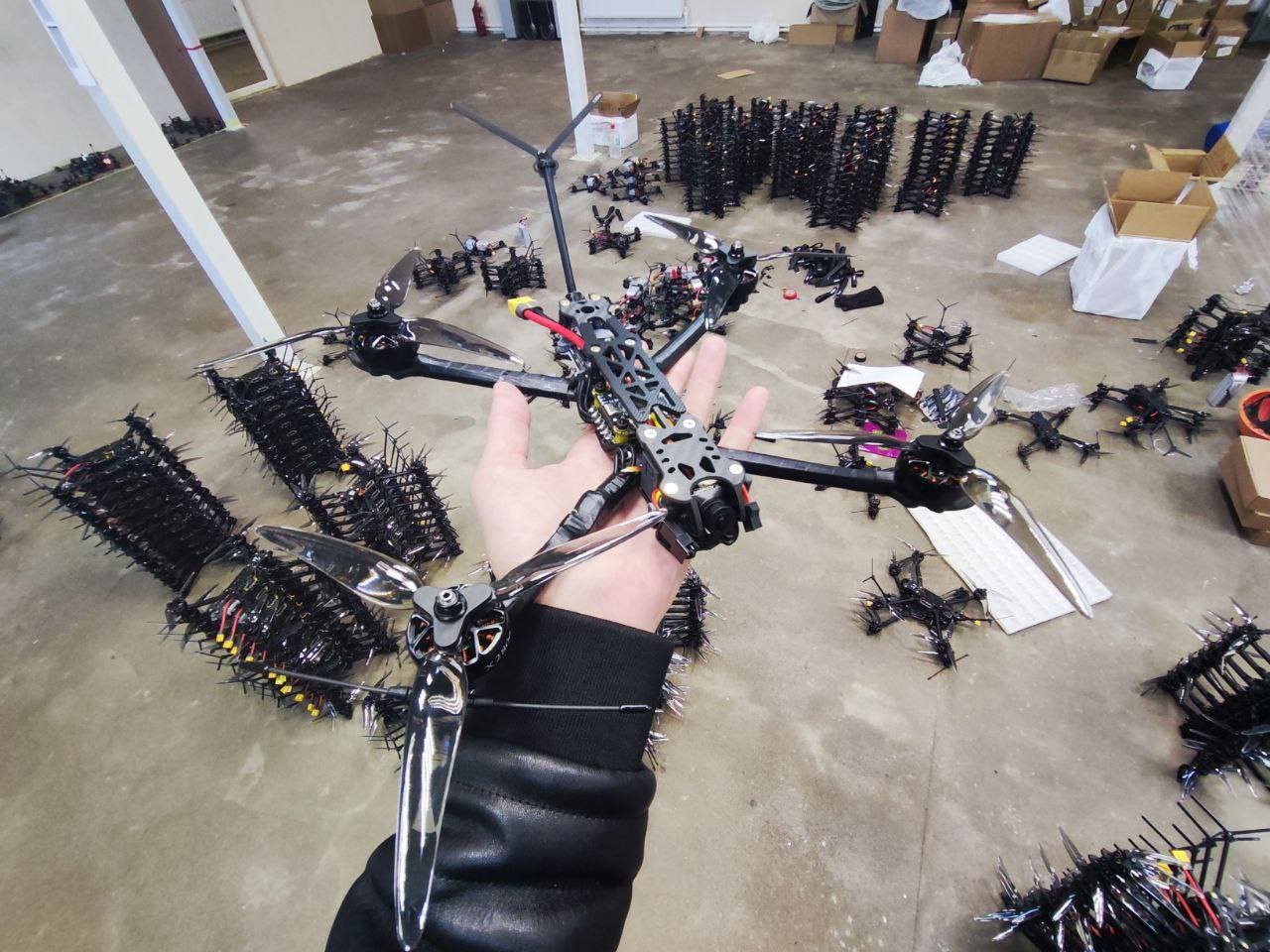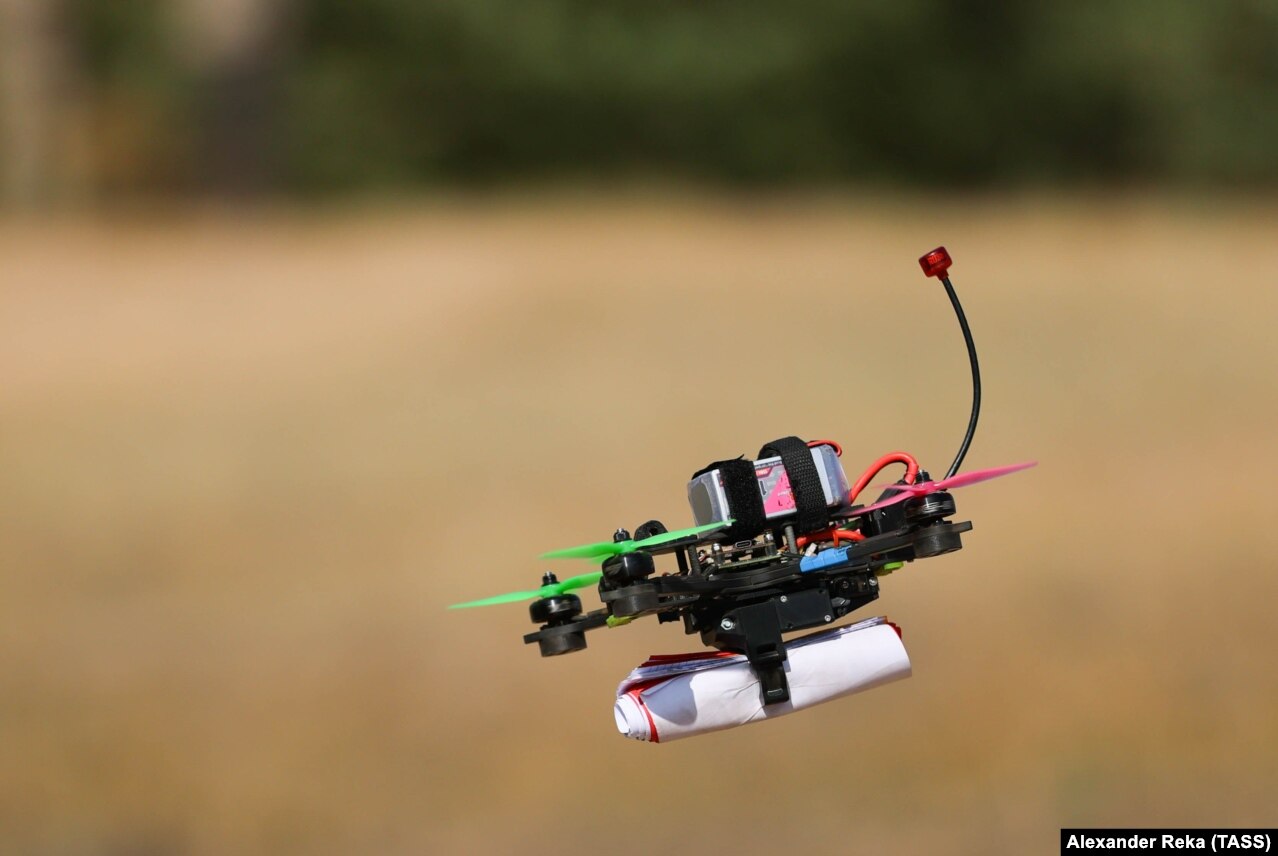Russia has integrated a thermal imager into its Russian Gortenzia (Hydrangea) FPV kamikaze drone, enhancing its capacity for nighttime combat missions in the area of the extraordinary military operation in Ukraine, reported TASS.
The Gortenzia drone, a mass-produced unmanned aerial vehicle (UAV), is designed for various operational roles. It can be deployed for tasks such as reconnaissance, locating targets, delivering payloads, and functioning as a kamikaze vehicle when necessary.
Developed by experts from the Gortenzia design bureau, the Gortenzia drones are continuously evolving, the developer told TASS on October 6.
The company disclosed that specialists are actively broadening the Gortenzia FPV drone family and exploring various other unmanned aerial vehicle options.
Simultaneously, the Gortenzia control system and various supplementary modules are constantly refined to enhance the drone’s overall capabilities.

Notably, a recent achievement of the design bureau is the creation of a drone equipped with a thermal imager. This development empowers it to execute missions during the night in Ukraine.
The company revealed that since 2022, over 2,500 Gortenzia UAVs have been dispatched to the special military operation zone.
“Russian service members sometimes send video materials with missions accomplished. Over this month alone, they have sent us 20 records of sorties,” the drone’s developer added.
However, the company said that they do not keep precise records of enemy targets destroyed or damaged, as their primary focus is on the production and distribution of these drones, as clarified by the design bureau.
The Gortenzia drone series boasts varying payload capacities, with the Gortenzia 7 (7 inches) model capable of carrying a maximum load of 2 kg. The larger Gortenzia 9 (9 inches) models can handle payloads ranging from 3 to 3.5 kg.
Regarding flight endurance, these UAVs can operate for 6 to 8 minutes when carrying a payload and extend their flight time to approximately 30 minutes without any additional load.
Their effective strike range covers a distance of approximately 7 km, but it can be expanded when utilizing a Gortenzia R rebroadcasting transmitter.
Russia Winning FPV Drone Warfare?
The ongoing conflict in Ukraine is regarded as the world’s first large-scale drone warfare scenario. The introduction of first-person view (FPV) drones, which have been deployed in large numbers, fundamentally reshaped the nature of this conflict.
First-person view (FPV) drones, characterized by their remarkable speed, exceptional maneuverability, and affordability, have become the primary attack drones in the Ukraine conflict.
Operated by individuals who wear headsets to access real-time video feeds from drones, these agile aircraft have become the go-to choice for precision missions against the enemy.
These FPV drones have also assumed a critical role in addressing a crucial void resulting from a scarcity of Western artillery rounds and precision weaponry.
Their capability to transport heavier explosive payloads has positioned them as the favored means for tank destruction in specific military units.
This empowers operators to target vulnerable points on tanks, such as engines and tracks, with pinpoint accuracy.

During their operations, an FPV pilot usually collaborates closely with a navigator, and a separate team operates a surveillance drone to provide a broader perspective of the area.
However, using FPV drones does not guarantee flawless performance; quite the contrary, they frequently encounter challenges.
FPV drones often experience a higher rate of misses than hits, and these failures can be attributed to various factors, including electronic jamming and the depletion of batteries during missions.
While both sides are employing these drones, Russia appears to maintain a larger supply. Ukrainian personnel recently conveyed to The Washington Post that Russian units similarly employ FPV drones, but Moscow seems to possess a more abundant stockpile of these devices.
“It’s like a chess game,” he said. “They’re winning it. Just in terms of quantity.”
Considering the widespread utilization of these drones, it is evident why the Russian developers opted to incorporate a thermal imager into the FPV drone.
Integrating a thermal imager into the Russian Gortenzia (Hydrangea) FPV kamikaze drone will provide various benefits. Firstly, it will significantly enhance the drone’s nighttime capacity, allowing it to operate effectively in low-light and dark conditions, thereby expanding its mission capabilities.
Additionally, this technology will enhance target detection capabilities, allowing the drone to identify heat signatures emanating from objects and individuals, even in total darkness.
This heightened reconnaissance capability would result in enhanced situational awareness, including detecting concealed targets and detecting movement patterns more effectively.
- Contact the author at ashishmichel(at)gmail.com
- Follow EurAsian Times on Google News




